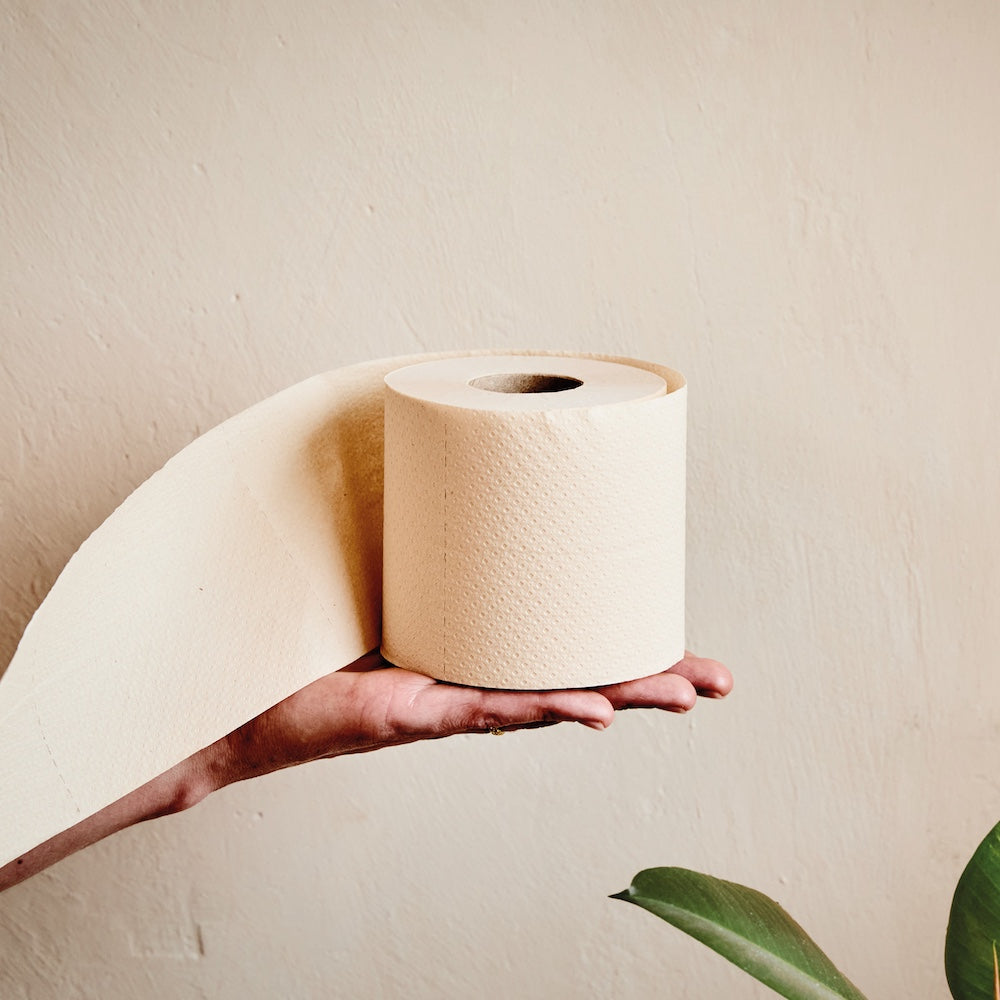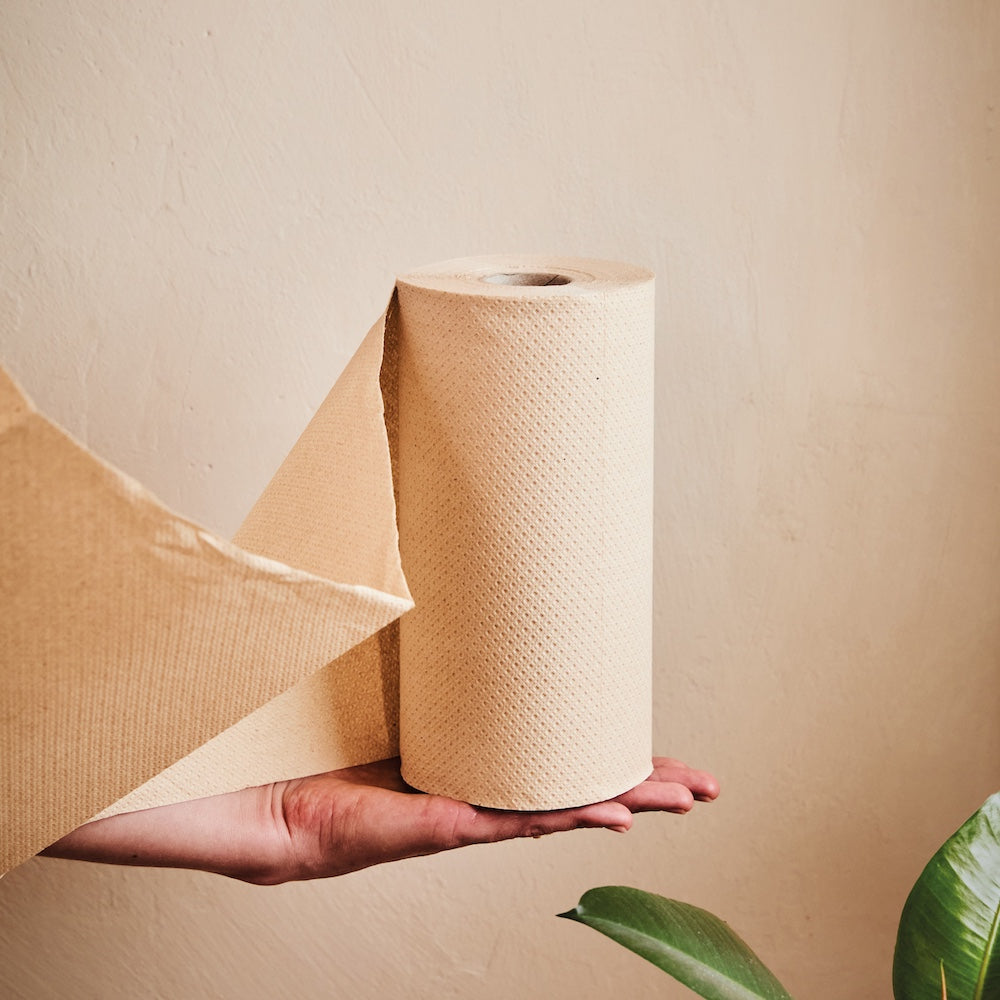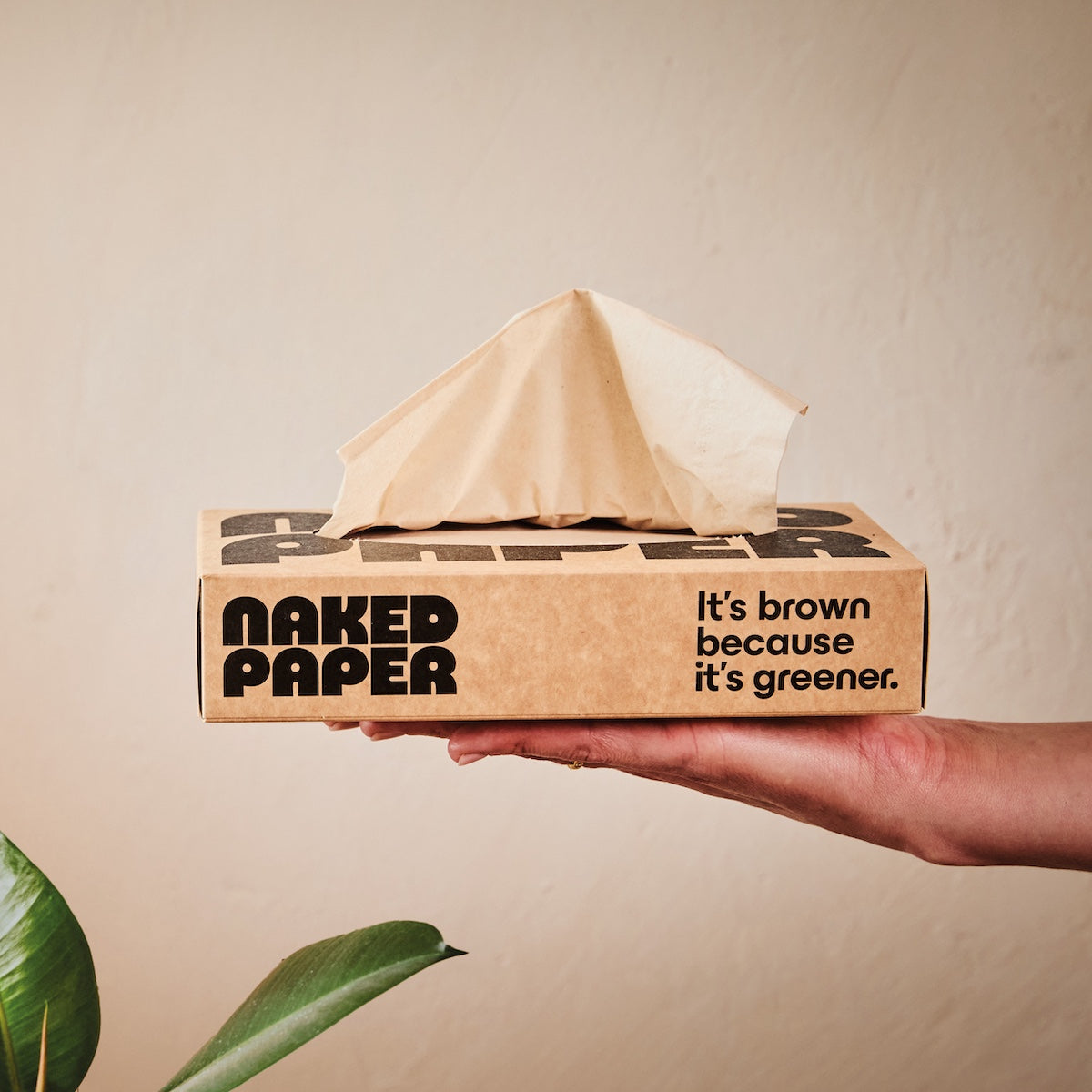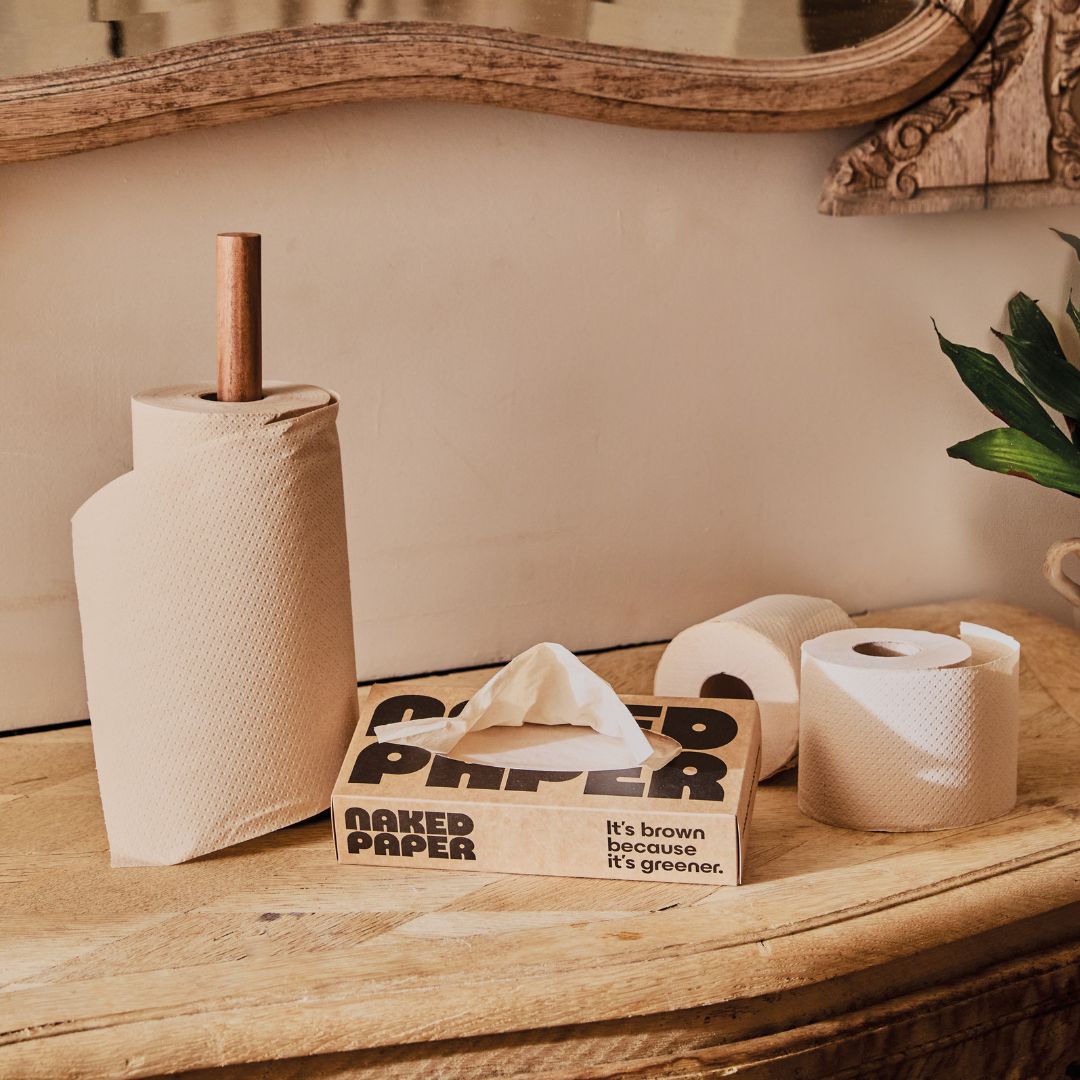Behind the scenes with our recycled toilet rolls
For most of us, recycling is a daily part of life. We separate paper and plastics at home, we see the symbols on products we pick up every day, we look for new homes for old clothes or toys or books.
And for many of our customers recycling happens in the bathroom too, in the form of our lovely unbleached recycled toilet rolls. But what, exactly, are our recycled rolls made out of? What are we recycling?
In our last post we took a tour of our bamboo forests and this week we’re following up with our other raw material, the recycled packaging materials that become Naked Paper rolls. Ready to recycle and roll? Let’s get to it.

Sourcing our materials
We make our rolls from recycled boxes, and recycled brown paper, that have been used as packing materials. Packing materials for what? All sorts of stuff! All of the packaging materials are sourced within 85km of our factory, and they mostly come from supermarkets and eCommerce warehouses, so they’ve been used for delivery for all manner of foods and basic household goods.
This is quite different from the material used for most recycled toilet rolls. Most of the white recycled rolls you’ll find in the shops are made from white printer paper, like the paper used in offices. But over the last few years there’s less and less of this material around; people spend more time working at home and most of us read digital versions of documents from screens, instead of printing them.

So now there’s much less office paper in recycling bins, and the response from some of the largest toilet paper manufacturers has been disappointing. Research by The Ethical Consumer found that some manufacturers, in response to the shortage in waste office paper, have been using more virgin wood pulp in their products.
We think this is a missed opportunity, particularly since the same trends of home working and digitisation have actually led to a rise in another kind of material that is just as good for making tissue - cardboard packaging. The cardboard boxes and kraft paper used by large commercial websites and supermarkets are rich in fibres that will make high-quality recycled toilet paper. And with the surge in online shopping over the past few years, there's plenty of boxes around.
These packaging materials are picked up from supermarkets and kerbside recycling schemes in the area around our factory and they come to us by truck. So we end up with a big mixed pile of brown cardboard and paper, and now we need to make it all nice and tidy!
Checking and pressing
Once our material has been collected every item is given a look-over to make sure there are no large non-paper or non-cardboard elements, like big bits of metal and plastic, mixed in. Once we’re happy there’s nothing there that could disrupt the recycling process we press the material down into large bales that are held together by metal cords. These bales make it easier to transport the recycled material around the factory and store it. When the bales are eventually shredded we cut these metal cords and send them off for recycling as well.

Pulping and floating
After shredding the bales we feed the material into the pulper, a massive machine where the material is mixed with water and gently “slushed” . This breaks down the paper into a slurry, without damaging the fibres, so it will still make strong toilet tissue at the end.
We’ve removed the large bits of metal and plastic during our initial inspection, but at this stage there are still going to be some odds and ends of non-paper elements that were part of the original packaging like tape, string, and blobs of glue. The gentle action of the pulper means that these interlopers are still intact, so how do we remove them?
It’s very simple - we just let them float! During the pulping process, any contaminants that shouldn’t be there will float at different heights in the slurry. This makes them easy to separate out of the paper/cardboard mix, so we collect them all up, compact them into bales, and send them to waste treatment plants.
The slurry that’s left over will be 100% paper and cardboard pulp, and there’s just one final stage before we can turn it into tissue.
Gentle cleaning
So now the non-paper elements have been removed it’s time to clean the pulp. We use a few different ingredients to do this, they all meet REACH regulation standards so we know they’re not damaging to the environment. This is really important to us because our tissue factory has stood on the banks of the river Fluvia in Spain since 1881, and we want to keep the river healthy! So not only do we only use very gentle additives to clean our pulp, we also test the water quality four times a year, before it enters the factory and after it’s been used, to make sure there’s been no degradation in key environmental markers.

A big part of how we can keep our processes so clean is the fact that we’re not using any bleach to lighten the colour of our final products. This decision cuts down on the amount of chemical products we need and it also means that different batches of our recycled rolls might have slightly different colour hues, depending on the mix of cardboard and kraft paper used for that particular batch. Variation is the most natural thing in the world, so we’re happy to have subtle changes in shade from batch to batch, and our customers don’t seem to mind!
From parent rolls to toilet rolls
The cleaned pulp is spread out and dried (using renewable biomass) into large sheets. These sheets are then wound into huge rolls known as parent rolls, here’s a picture of one of these rolls so you can see how big they are!

Parent rolls are wound into “logs”, which are the same length as the parent roll but much more thin, and these logs are then sawed down using a circular saw into the small rolls of toilet paper that go in our boxes. All of the machines that wind the rolls and cut them down are powered by renewable electricity that’s generated onsite at our factory.
Conclusion
That’s a wrap! We’re extremely proud of our recycled toilet rolls and how we’ve broken from the norm to improve their sustainability; from eco-friendly innovations like going without bleach, to using locally sourced packaging materials rather than office paper.
Our process involves a few steps and some fancy machines but at its heart it’s simple. We collect old cardboard and paper, we sort it and shred it, we pulp it and clean it, and then we roll it into big rolls, which we cut into small ones. Our recycled rolls have no bleach, no PFAS, no BPA, and no harsh chemicals at all. Different batches will come out slightly different colours, but whatever the shade we think they’re the perfect addition to your bathroom.
Want to give our unbleached recycled toilet rolls a whirl?




